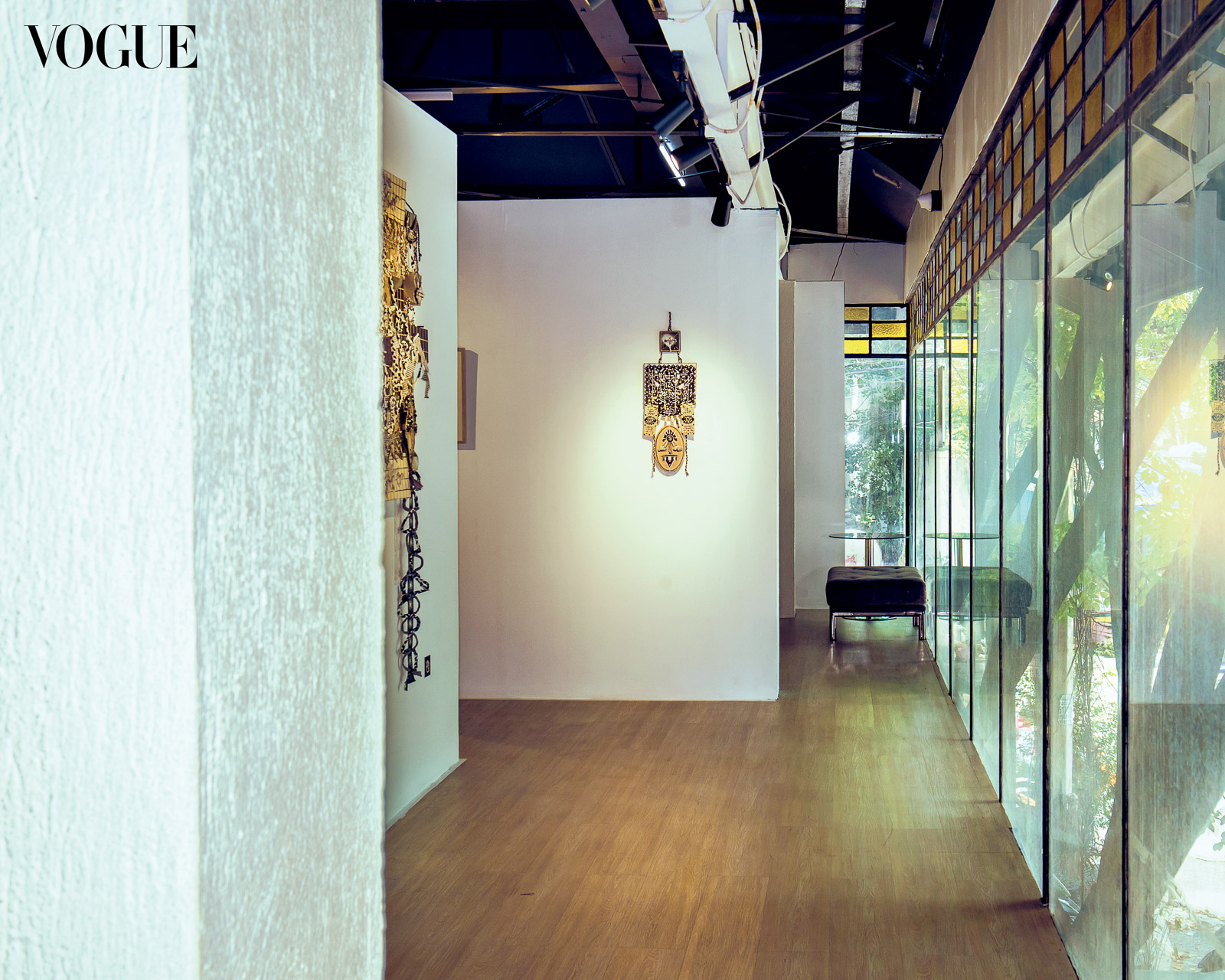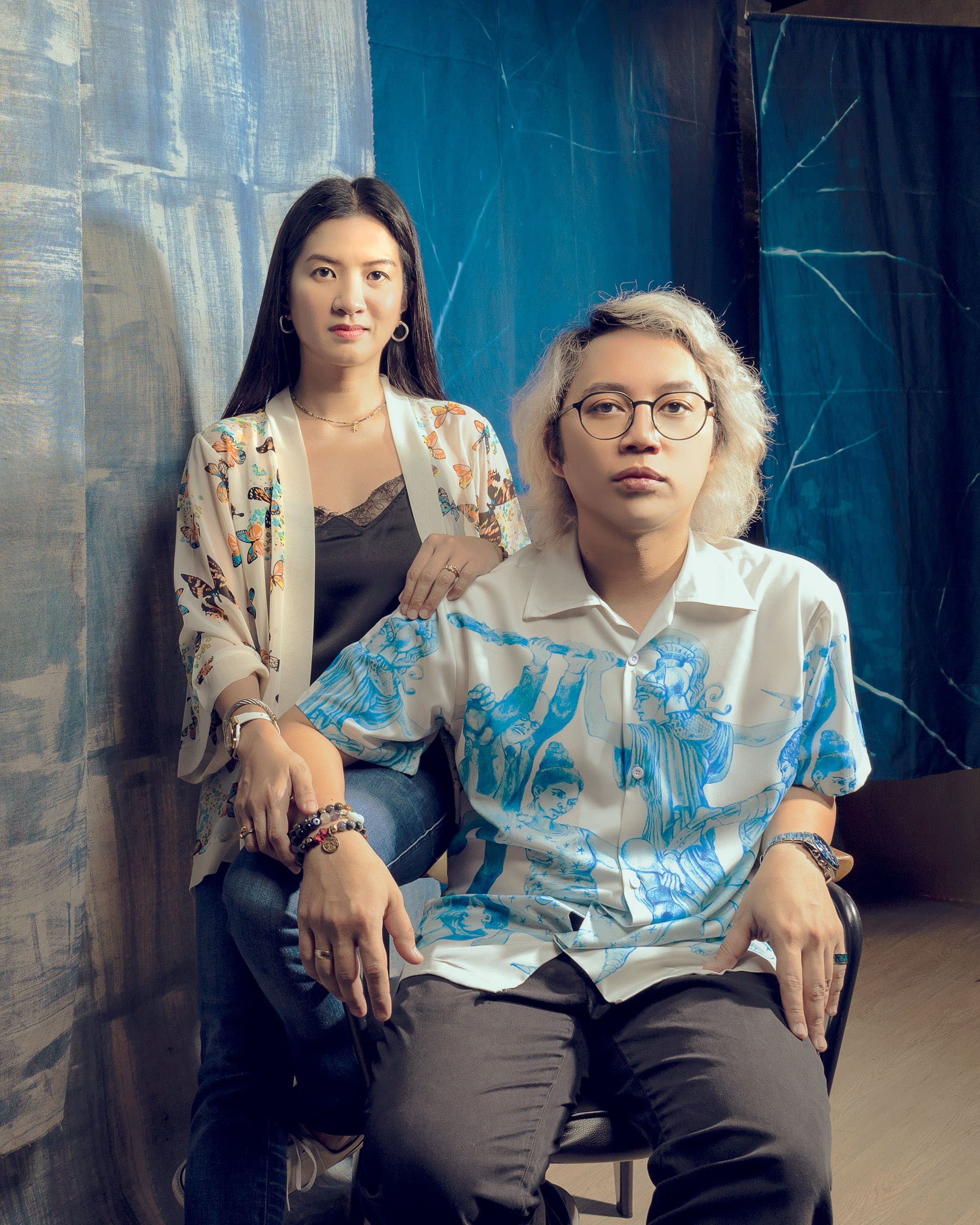Photo by Rob Frogoso
Gravity Art Space has become a laboratory where art from the most unforeseen areas come to incubate.
A blue neon sign that reads “Passion” glows inside a little room, tucked into a corner of a bar that used to be a restaurant kitchen. “This is the brainstorming room,” says Melai Matias. She and gallery director Indy Paredes run Gravity Art Space, a venue for exhibitions, performance art, and film screenings. Hidden within the gallery is their open-secret bar Dirty Kitchen, which regularly hosts poetry readings, music performances, and dance parties.
Double disguise
In the daytime, the outside of a weathered building labeled Nanka Japanese Steakhouse might make you think you have the wrong address for Gravity Art Space. Only a large abstract logo hanging from the façade gives a clue that more lies inside. Its entrance foyer appears empty and abandoned, and the stairway is accessible only through what used to be the restaurant kitchen.
At the top of the stairs, the gallery suddenly comes into view, and it is not the expected white box, but a composite space, freshly converted from its former life as a gym. Panel boards divide the floor area into sections, with a pathway cutting through the center. A small balcony overlooks the ground floor. It is exciting to imagine the possibilities of installing art in such an unconventional set up.
One of the hallways leads to a narrow, mirrored passage with a shadowy door, which further opens up to a dim but ample, fully-stocked bar. The white tiles are remnants of its days as an industrial kitchen, as is the old-fashioned dumbwaiter pulley system, used for servicing the still-functioning kitchen below.
“Filipinos have both a dirty kitchen and a more formal kitchen,” remarks Matias, explaining the bar’s name. Wall tiles are covered in sketches and scribbles by the artists who have come through. Behind the bartender’s station are colorful posters announcing events titled Makibak-la, Fantastic Phantasmic, and Cinemaccluh. These are clues and traces of what has happened here. Prominently hanging across the room is a rainbow flag, the universal symbol for Pride.
Like a Matryoshka nesting doll, the event space is within an art gallery within a restaurant. Here lies the strength of Gravity Art Space and its Dirty Kitchen: their coexistence acts like a magnet that pulls together disparate creators and their audiences, becoming a locus of avenues which may otherwise never converge.

Sweat equity
Gravity Art Space bravely opened in March 2021, at the height of the pandemic, when establishments that shuttered led to opportunities for available and affordable space. From its first few group shows, GAS eventually expanded to organizing six exhibitions a month, ambitious even for the most established galleries in the country. Concurrent with the ongoing art shows are a plethora of live events; they have held a silent film concert, community drumming, artist talks, film screenings, band gigs and various types of performances.
The few nightlife venues where the queer community would often assemble had closed the year before, and they had been searching for new places to commune again with their friends. GAS had just hired Alyana Cabral, (who sometimes goes by the name DJ Fake Wong), to manage Dirty Kitchen, which coincidentally, was renovated based on designs inspired by the films of Wong Kar Wai. Under Cabral’s helm, the queer parties began: That Elephant Party and the first edition of SadoMasoDisco.
Elephant, as it is nicknamed, is titled after “being the elephant in the room,” or the odd person in a crowd who is often dismissed. The party is a techno queer celebration, and more than that, it is a movement. Elephant recently gained international attention when it was featured on the Netflix docuseries Midnight Asia: Eat Dance Dream, which highlighted Elephant’s lively drag shows and the invaluable support of its co-organizers Shahani Gania (Superstarlet XXX) and Paul Jatayna. The parties were so well-attended that they spilled over from Dirty Kitchen to the empty restaurant downstairs.
SadoMasoDisco’s inaugural night at Dirty Kitchen was headlined by international DJ Romain Fx, and included several local DJs, one of which was Samantha Nicole of another queer haven, Futurist. Sado, which it is called for short, was founded by Jeric Lim (DJ Limsum ) and Karlo Vicente, with visuals designed by artist Nash Cruz. The rave series is gradually making its mark by inviting renowned international acts to play alongside a variety of exciting local acts.
Years before the inception of GAS, Paredes spent some time at an artist’s residency in Paris. His experience at the École Nationale Supérieure des Beaux-Arts exposed him to the possibilities of moving images and other media within the museum or gallery setting. In the first year of GAS, Paredes invited his friend Jun Sabayton, a filmmaker and visual artist, to organize an exhibition. Sabayton in turn invited his friends from the film and music industries to show their artistic work, and thus began GAS’ distinct programming that includes work from diverse creative fields.
The gallery had become a laboratory where art from the most unforeseen areas have come to incubate, leading to a redefinition of art and its audiences, and expanding the scope of what a gallery can be. The diversity of the genres, styles, methods, and theories it includes come together and blend, cross-pollinate, assimilate, and ultimately invigorate the rich micro culture of GAS. It is through this strategy that Paredes promotes not only queer representation, but also “queerness as a state of mind.”
“Indy and Melai are welcoming towards the queer community,” says artist Denver Garza about working with GAS, and whose solo exhibition Descent to Sleeping Mountain opened in April. “My relationship with art-making has always been holistic. Part of my practice that is close to queerness is having the intention to not be defined by a single medium or movement (and other categorizations in the art world). That has always been the nature of my creative process; dynamism has been important in nurturing my world building,” Garza says. “I look at the shared feelings and ideas we all experience. It just so happens that I am gay but I hope that everyone can relate to my work, no matter what it is.”
Jao San Pedro’s solo exhibition Misnomer, which opened at GAS in May 2022, believes that the gallery gave her the space to grow her ideas. “They showed me the utmost support which means so much to me. Space for trans/queer folks are, to this day, still scarce, and in so many ways GAS has afforded us space to take up,” she explains.
Part of a July 2022 group show titled The Thousand-Yard Stare, Leah Castañeda of the gallery/nightspot Futurist shares how GAS has been a pleasure to work with. Curated by Koki Lxx, the show was an homage to the artist Bree Jonson, a dear friend who had recently passed away. “Owning a gender-inclusive creative space myself, it’s important for me to work with and allow myself to be represented by galleries that choose sincerity over posterity,” she says. “I believe authenticity in art goes beyond who I choose to love, or which demographic or community I belong to. However, that doesn’t mean I don’t expect it to play a part in how people interpret my work. After all, the way art resonates with someone can be very relative.”

Drama of masquerade
A GAS popular year-ender program The No Name Show reflects their developing trademark: a unique penchant for concealing identity. It is a massive group show characterized by artworks on display without labels or reference catalogues. Over the course of time however, the names are revealed; this year the big reveal was made at the Xavier Art Fest. Their secrecy has its purpose, as the gallery owners claim “the concept started as a commentary on the peculiar habits of our supporters on acquiring artworks by name.” Instead they encourage “seeing artworks in person and obtaining them by taste.” The show has since become “a playground and platform for masters and contemporaries to explore artmaking beyond their name or brand, in the power and privilege of anonymity.”
In many ways, this proposition applies to all of GAS programs: they experiment with openness while suspending judgement, and engage with everyone who discovers their space and dares enter it.
This article was originally published on Vogue Philippines, June 2023 issue.
